


MOI Scoop
Brand
Ads
Storytelling
Design
Trends
ISSUE #22
Sep 25


MOI Global creatives are often asked where we get our inspiration. The answer is always the same: anywhere and everywhere.
Take a stroll through this set of head-turning art, copy, ads, literature, culture, and trends that inspire us. And some of our original work that proves we take notice of what we see, when we look around. Features images and articles from multiple online sources, shared for inspiration purposes only, not commercial use. © various owners (see URLs throughout for more information).
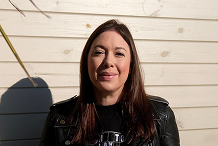

Vikki Ross refers to her craft with a capital C. Through this small act of lexical defiance, she is empowering the humble Copywriter, reminding the world that wordsmiths deserve recognition beyond the infectious tag lines and quotable slogans that they create.

MOI: What do you think it takes to turn heads with copy?
Vikki: Something honest, something funny, something genuinely interesting. If it feels real, it’s relatable. If it makes someone experience any kind of emotion, it’s made an impact. If it compels people to want to know more, it’s effective. We should never take our audience’s attention, time or money for granted – it’s our responsibility to show or tell them what they need to know, not what we want them to know. So often those things are not the same thing.

MOI: How do you balance consistency and creativity when writing for long-established brands?
Vikki: How a brand talks can evolve. The thing that connects copy back to a brand is consistency. Long-established brands are known to own words or phrases (for example, Carlsberg is known for saying ‘probably’ and KitKat is known for saying ‘have a break’) so if we keep using them, we keep that connection going.
This doesn’t mean we can go off brand as long as we throw those words or phrases around. Consistency shouldn’t be at the expense of creativity, and vice versa. Being consistent and creative is part of the job of protecting a brand – a creative idea must always serve the brand and its audience.

MOI: What's one 'copywriting crime' you'd banish forever if you could?
Vikki: One? I can’t choose one! But if I must…Maybe it’s asking, ‘Why not…?’ When copy opens with it – Why not try our new this? Why not buy our new that? – I scream in my head, ‘Yeah, but why? Tell me why!’ I’m all for intrigue and inviting our audience to connect dots or fill in gaps but this is lazy. Boring too – it doesn’t give anyone anything to go on. By the way, if you asked me this at Christmas, I’d say ‘all wrapped up’ – it’s everywhere every year and I’m sick of it.
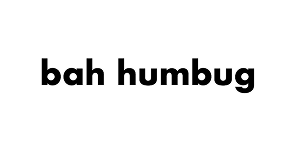
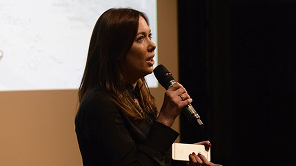


Vikki Ross refers to her craft with a capital C. Through this small act of lexical defiance, she is empowering the humble Copywriter, reminding the world that wordsmiths deserve recognition beyond the infectious tag lines and quotable slogans that they create.

MOI: What do you think it takes to turn heads with copy?
Vikki: Something honest, something funny, something genuinely interesting. If it feels real, it’s relatable. If it makes someone experience any kind of emotion, it’s made an impact. If it compels people to want to know more, it’s effective. We should never take our audience’s attention, time or money for granted – it’s our responsibility to show or tell them what they need to know, not what we want them to know. So often those things are not the same thing.
MOI: How do you balance consistency and creativity when writing for long-established brands?
Vikki: How a brand talks can evolve. The thing that connects copy back to a brand is consistency. Long-established brands are known to own words or phrases (for example, Carlsberg is known for saying ‘probably’ and KitKat is known for saying ‘have a break’) so if we keep using them, we keep that connection going.
This doesn’t mean we can go off brand as long as we throw those words or phrases around. Consistency shouldn’t be at the expense of creativity, and vice versa. Being consistent and creative is part of the job of protecting a brand – a creative idea must always serve the brand and its audience.


MOI: What's one 'copywriting crime' you'd banish forever if you could?
Vikki: One? I can’t choose one! But if I must…Maybe it’s asking, ‘Why not…?’ When copy opens with it – Why not try our new this? Why not buy our new that? – I scream in my head, ‘Yeah, but why? Tell me why!’ I’m all for intrigue and inviting our audience to connect dots or fill in gaps but this is lazy. Boring too – it doesn’t give anyone anything to go on. By the way, if you asked me this at Christmas, I’d say ‘all wrapped up’ – it’s everywhere every year and I’m sick of it.
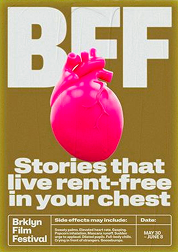
MOI: What's one recent piece of copy that caught your attention – and why?
Vikki: OTHERWAY’s campaign for Brooklyn Film Festival. My favourite line is ‘Stories that live rent-free in your chest’ because I felt it as I read it. And that’s the job – to make people feel stuff. Also, it’s a line I don’t reckon AI could write and I’m collecting those because us copywriters need back-up when it comes to presenting our case for us vs AI.
It’s dramatic but I always tell copywriters to imagine they’re lawyers presenting a case in court (yes, I did watch Suits – twice). We won’t win an argument if we don’t prepare to win. And I’ve been saying this for years – some of us were fighting colleagues and clients writing copy before we were fighting those who choose to use AI. I’m not saying colleagues and clients can’t write – or that AI can’t write – everyone can write, but not everyone can write copy. Copywriters just have a way with words that others don’t.
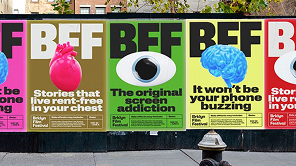
MOI: What's one of your favorite brand TOV projects you've worked on and why?
Vikki: Last year, I created a new voice for Range Rover, Defender, Discovery and Jaguar. After working with ents brands for 15 years, it was a challenge I didn’t know I needed.

The automotive and luxury brand category were new to me but the brief from JLR couldn’t have been clearer. After a couple of months of calls and meetings, and seeing some really solid strategy decks, I was in no doubt about what each voice could and should be. And I was in no doubt about how to create guidance that would bring those voices to life.
There are thousands of people at JLR – nearly all of them write something to someone every day. They have big jobs, they’re very busy, and they aren’t all copywriters, so guidance needed to be clear and succinct for everyone to digest quickly and execute easily.
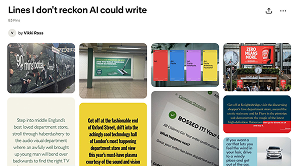
I’m not one for quoting Albert Einstein but “If you can’t explain it simply, you don’t understand it well enough.” came to mind at the time. JLR already knew so much about each vehicle in their House of Brands. They didn’t need me playing loads of information back to them in lengthy guidelines, so I wrote a really quick, comprehensive overview of what each voice is, followed by a list of practical tips – perfect for everyone to work with, whether they’re writing, reviewing or approving copy.
While the Sky brand book I wrote in 2011 will always be my first love, the JLR House of Brands guidelines are probably my favourite so far.
MOI: How do you see AI shaping the future of writing and brand TOV - for better or worse?
Vikki: I don't know. That's my short answer.
Here’s my long answer – caveated with some important points for context: I’m old and old-fashioned and I only really know how to work a Word doc. I tried seeing what AI could do – once – and got bored very quickly.
But…Back in 2019, I did a load of research to see what AI might be capable of when it comes to creating ads and writing copy. It’s now 2025 and what I found then hasn’t changed much since. That’s six years – that’s ages in AI years, isn’t it?
AI can generate standard stuff, but it can’t create standout stuff – stuff that’s going to really mean something to someone. We can only programme AI with information, not inspiration or imagination. It isn’t alive, it doesn’t live – not like humans anyway, so it can’t feel or experience anything like humans do.
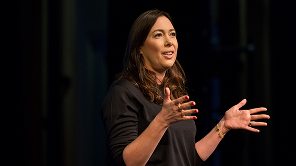
To write copy that’s meaningful to humans, we need to programme AI with input that real people can really relate to. But AI will never be human so it can’t process that input to make any output feel real or relatable.
More practically and technically speaking, AI can’t play with copy. It can’t play with words, phrases, meanings and punctuation. For example, I don’t believe AI could come up with something like ‘Light. Years ahead.’ like someone at Apple did when they introduced their new MacBook Air. Those three words work hard – information presented in threes is scientifically proven to make it memorable and the full-stop turns one benefit into two. It’s not just an interesting line; it’s presented in an interesting way.
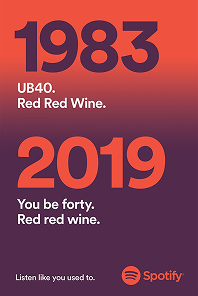
And when I think about creating a brand’s voice, I think AI can’t do that either. Sure, it could describe what a voice should be, but it couldn’t then provide us with practical guidance on how to write in that voice.
So, I don’t think AI will shape the future of copywriting for the better. I get that it will help some people but I think trusting it comes with extra work. Fact-checking, for a start. And I get that some people think it will help us get to better ideas faster, but I don’t think that’s a good thing. Often, the idea we find in the mess of the process is the one we didn’t know we were looking for. Outsource our thinking to AI and we might miss out on something really special.



MOI: What's one recent piece of copy that caught your attention – and why?
Vikki: OTHERWAY’s campaign for Brooklyn Film Festival. My favourite line is ‘Stories that live rent-free in your chest’ because I felt it as I read it. And that’s the job – to make people feel stuff. Also, it’s a line I don’t reckon AI could write and I’m collecting those because us copywriters need back-up when it comes to presenting our case for us vs AI.
It’s dramatic but I always tell copywriters to imagine they’re lawyers presenting a case in court (yes, I did watch Suits – twice). We won’t win an argument if we don’t prepare to win. And I’ve been saying this for years – some of us were fighting colleagues and clients writing copy before we were fighting those who choose to use AI. I’m not saying colleagues and clients can’t write – or that AI can’t write – everyone can write, but not everyone can write copy. Copywriters just have a way with words that others don’t.

MOI: What's one of your favorite brand TOV projects you've worked on and why?
Vikki: Last year, I created a new voice for Range Rover, Defender, Discovery and Jaguar. After working with ents brands for 15 years, it was a challenge I didn’t know I needed.
The automotive and luxury brand category were new to me but the brief from JLR couldn’t have been clearer. After a couple of months of calls and meetings, and seeing some really solid strategy decks, I was in no doubt about what each voice could and should be. And I was in no doubt about how to create guidance that would bring those voices to life.
There are thousands of people at JLR – nearly all of them write something to someone every day. They have big jobs, they’re very busy, and they aren’t all copywriters, so guidance needed to be clear and succinct for everyone to digest quickly and execute easily.
I’m not one for quoting Albert Einstein but “If you can’t explain it simply, you don’t understand it well enough.” came to mind at the time. JLR already knew so much about each vehicle in their House of Brands. They didn’t need me playing loads of information back to them in lengthy guidelines, so I wrote a really quick, comprehensive overview of what each voice is, followed by a list of practical tips – perfect for everyone to work with, whether they’re writing, reviewing or approving copy.
While the Sky brand book I wrote in 2011 will always be my first love, the JLR House of Brands guidelines are probably my favourite so far.


MOI: How do you see AI shaping the future of writing and brand TOV - for better or worse?
Vikki: I don't know. That's my short answer.
Here’s my long answer – caveated with some important points for context: I’m old and old-fashioned and I only really know how to work a Word doc. I tried seeing what AI could do – once – and got bored very quickly.
But…Back in 2019, I did a load of research to see what AI might be capable of when it comes to creating ads and writing copy. It’s now 2025 and what I found then hasn’t changed much since. That’s six years – that’s ages in AI years, isn’t it?
AI can generate standard stuff, but it can’t create standout stuff – stuff that’s going to really mean something to someone. We can only programme AI with information, not inspiration or imagination. It isn’t alive, it doesn’t live – not like humans anyway, so it can’t feel or experience anything like humans do.
To write copy that’s meaningful to humans, we need to programme AI with input that real people can really relate to. But AI will never be human so it can’t process that input to make any output feel real or relatable.
More practically and technically speaking, AI can’t play with copy. It can’t play with words, phrases, meanings and punctuation. For example, I don’t believe AI could come up with something like ‘Light. Years ahead.’ like someone at Apple did when they introduced their new MacBook Air. Those three words work hard – information presented in threes is scientifically proven to make it memorable and the full-stop turns one benefit into two. It’s not just an interesting line; it’s presented in an interesting way.
And when I think about creating a brand’s voice, I think AI can’t do that either. Sure, it could describe what a voice should be, but it couldn’t then provide us with practical guidance on how to write in that voice.
So, I don’t think AI will shape the future of copywriting for the better. I get that it will help some people but I think trusting it comes with extra work. Fact-checking, for a start. And I get that some people think it will help us get to better ideas faster, but I don’t think that’s a good thing. Often, the idea we find in the mess of the process is the one we didn’t know we were looking for. Outsource our thinking to AI and we might miss out on something really special.


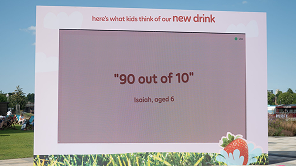
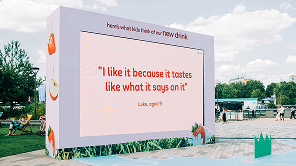
Innocent Drinks doesn't do fluff. And this recent OOH campaign proves that. They didn't rely on clever wordplay or metaphors – just brutally honest, refreshing reviews from kids. Because nothing says it better than a "90 out of 10" from a 6 year old.
Image and article courtesy © Imogen Almond, LinkedIn
Read here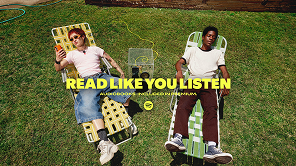
Spotify has always been renowned for its bold visuals and playful copy, and its recent 'Read like you listen' campaign is no exception. The striking headlines effortlessly bring the energy, passion and obsession surrounding music into the world of audiobooks.
Image and article courtesy © Little Black Book
Read here
How do you use copywriting skills to make a brand genuinely distinctive? John Thornton shares his secrets on building the voices behind brands like Innocent Smoothies and SURREAL.
Image and article courtesy © The Marketing Meetup, YouTube
Watch here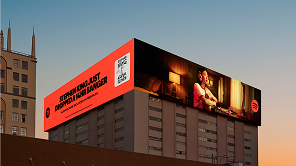
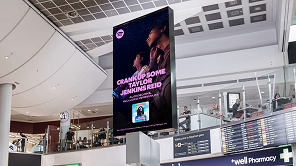


Innocent Drinks doesn't do fluff. And this recent OOH campaign proves that. They didn't rely on clever wordplay or metaphors – just brutally honest, refreshing reviews from kids. Because nothing says it better than a "90 out of 10" from a 6 year old.
Image and article courtesy © Imogen Almond, LinkedIn


Spotify has always been renowned for its bold visuals and playful copy, and its recent 'Read like you listen' campaign is no exception. The striking headlines effortlessly bring the energy, passion and obsession surrounding music into the world of audiobooks.
Image and article courtesy © Little Black Book


How do you use copywriting skills to make a brand genuinely distinctive? John Thornton shares his secrets on building the voices behind brands like Innocent Smoothies and SURREAL.
Image and article courtesy © The Marketing Meetup, YouTube
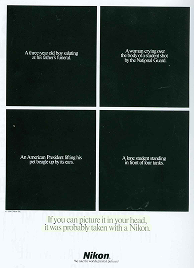
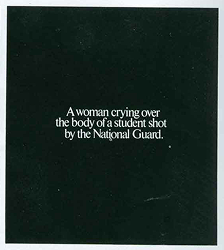
A picture's worth a thousand words, but the right words conjure up the perfect picture. This 1991 print campaign from Nikon shows the real power of words – a camera brand publishing an ad without a single image in sight, but says everything it needs to.
Image and article courtesy © Nobody Reads Ads
Read hereYet another example of a car brand leaning into its quirks. This playful headline from the 1996 Daihatsu Hijet MPV print ad uses humor to directly challenge the appeal of expensive sports cars.
Image and article courtesy © Digital Tripathi
Read here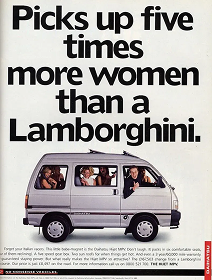

In 1959, Volkswagen recognized something few other brands did. That the best way to get noticed is to own your differences. Instead of adapting to the "bigger is better" narrative that was taking over the US, they challenged it, showing the benefits of "thinking small".
Image and article courtesy © Hagerty
Read here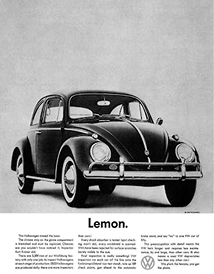
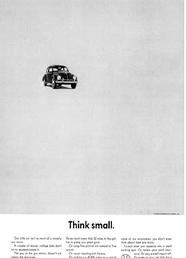



A picture's worth a thousand words, but the right words conjure up the perfect picture. This 1991 print campaign from Nikon shows the real power of words – a camera brand publishing an ad without a single image in sight, but says everything it needs to.
Image and article courtesy © Nobody Reads Ads

Yet another example of a car brand leaning into its quirks. This playful headline from the 1996 Daihatsu Hijet MPV print ad uses humor to directly challenge the appeal of expensive sports cars.
Image and article courtesy © Digital Tripathi


In 1959, Volkswagen recognized something few other brands did. That the best way to get noticed is to own your differences. Instead of adapting to the "bigger is better" narrative that was taking over the US, they challenged it, showing the benefits of "thinking small".
Image and article courtesy © Hagerty

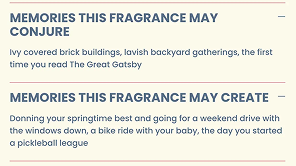

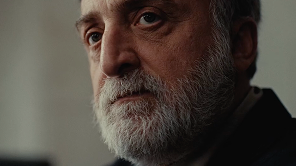
This campaign from Reporters Without Borders echoes the first speeches of infamous dictators to send a powerful message: we can't trust pretty words. But we can trust the free press.
Image and article courtesy © D&AD
Read hereFew brands tap into the magic of storytelling like indie perfume company, Imaginary Authors. Every fragrance becomes a literal story – titles of imagined books, attributed to different fictional authors, complete with snippets of lore. They're not described by notes but by the memories they conjure and new ones they create.
Image and article courtesy © Reed Words
Read hereJohn Lewis recognized you can sell a product, or you can sell a story. With its 'Give Knowingly' campaign, they opted for the latter – paying tribute to the complex relationships of its customers and how gifts hold so much more sentimental value than often meets the eye.
Image and article courtesy © D&AD
Read here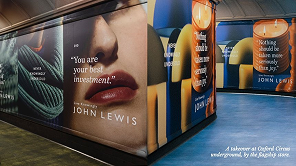
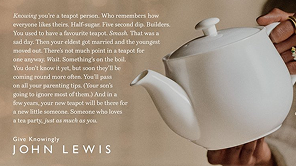
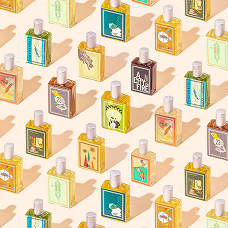



This campaign from Reporters Without Borders echoes the first speeches of infamous dictators to send a powerful message: we can't trust pretty words. But we can trust the free press.
Image and article courtesy © D&AD


Few brands tap into the magic of storytelling like indie perfume company, Imaginary Authors. Every fragrance becomes a literal story – titles of imagined books, attributed to different fictional authors, complete with snippets of lore. They're not described by notes but by the memories they conjure and new ones they create.
Image and article courtesy © Reed Words


John Lewis recognized you can sell a product, or you can sell a story. With its 'Give Knowingly' campaign, they opted for the latter – paying tribute to the complex relationships of its customers and how gifts hold so much more sentimental value than often meets the eye.
Image and article courtesy © D&AD
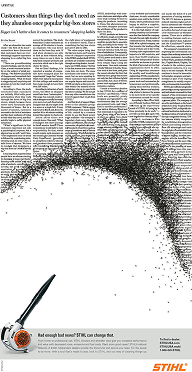
Stihl mastered the art of "show don't tell" with their 2009 print campaign. Visually striking, it quite literally cuts through the fluff to show exactly what its products achieve.
Image and article courtesy © Ads of the World
Read here
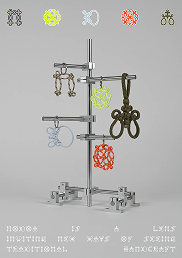
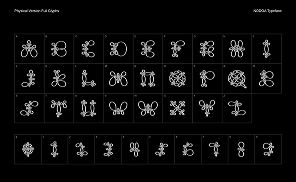
Creating the perfect typeface isn’t worth tying yourself in knots over. Well, unless you’re Eikou Zhang, who configured a full Latin letterset with one classic Chinese knot at its core.
Image and article courtesy © Eikou Zhang & It’s Nice That
Read hereStefan Sagmeister is renowned for his bold boundary-pushing typography designs. He frequently combines words and bodies to show a distinctly human, intimate side of design.
Image and article courtesy © type.today
Read here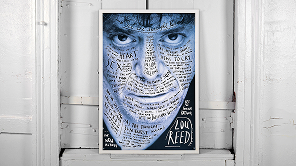
Milton Glaser's 'I ❤️ NY' is typographically one of the most widely recognized logos across the globe – proving that sometimes the simplest of messages leave nothing more to be said.
Image and article courtesy © Eikou Zhang & It’s Nice That
Read here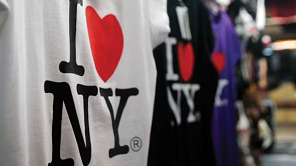


Stihl mastered the art of "show don't tell" with their 2009 print campaign. Visually striking, it quite literally cuts through the fluff to show exactly what its products achieve.
Image and article courtesy © Ads of the World


Creating the perfect typeface isn’t worth tying yourself in knots over. Well, unless you’re Eikou Zhang, who configured a full Latin letterset with one classic Chinese knot at its core.
Image and article courtesy © Eikou Zhang & It’s Nice That

Stefan Sagmeister is renowned for his bold boundary-pushing typography designs. He frequently combines words and bodies to show a distinctly human, intimate side of design.
Image and article courtesy © type.today

Milton Glaser's 'I ❤️ NY' is typographically one of the most widely recognized logos across the globe – proving that sometimes the simplest of messages leave nothing more to be said.
Image and article courtesy © Creative Review
Ever been told you need to "speak the language of your customers"? Well McDonald's showed how with this OOH campaign in New Zealand, which cleverly uses copy to mimic the slurred orders of their customers with an alcohol-fuelled case of the midnight munchies.
Image and article courtesy © The Drum
Read here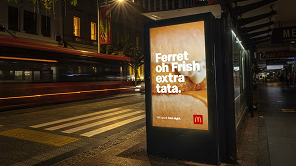
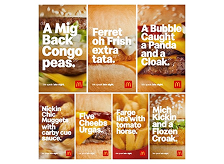
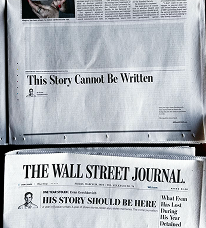
The Wall Street Journal proved the loudest statements sometimes require no words at all with their 'Missing Story' campaign. Launched one year after the wrongful imprisonment of journalist Evan Gershkovich in Russia, the publisher continued to tell Evan's story through a series of blank spaces where his articles should have been.
Image and article courtesy © Creative Review
Read hereBournville is making a comeback with a campaign that shows the power of simplicity in the face of flashy theatrics. With quietly confident copy and a comical script, it's a witty mic drop from the chocolate bar that's never needed to shout.
Image and article courtesy © Creative Boom, Campaign
Read here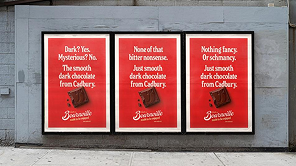
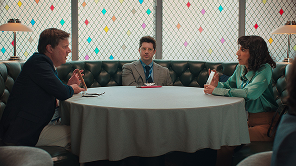




Ever been told you need to "speak the language of your customers"? Well McDonald's showed how with this OOH campaign in New Zealand, which cleverly uses copy to mimic the slurred orders of their customers with an alcohol-fuelled case of the midnight munchies.
Image and article courtesy © The Drum

The Wall Street Journal proved the loudest statements sometimes require no words at all with their 'Missing Story' campaign. Launched one year after the wrongful imprisonment of journalist Evan Gershkovich in Russia, the publisher continued to tell Evan's story through a series of blank spaces where his articles should have been.
Image and article courtesy © Creative Review


Bournville is making a comeback with a campaign that shows the power of simplicity in the face of flashy theatrics. With quietly confident copy and a comical script, it's a witty mic drop from the chocolate bar that's never needed to shout.
Image and article courtesy © Creative Boom, Campaign
Need inspiration for your next campaign, or want to chat with our global Creative
Team?
creative@moi-global.com
Get those creative juice flowing with head-turning
examples of
creativity, straight to your inbox.